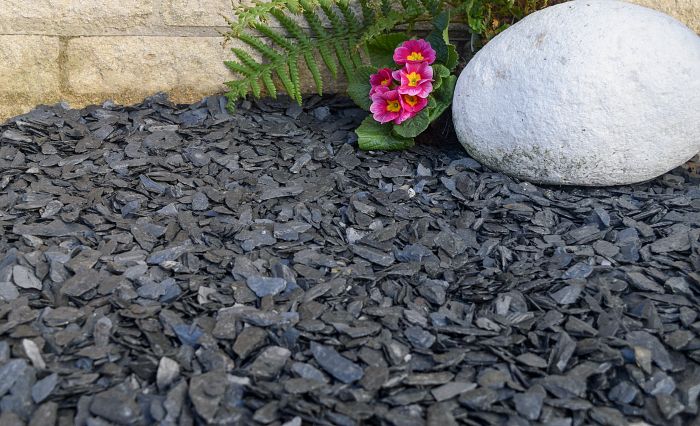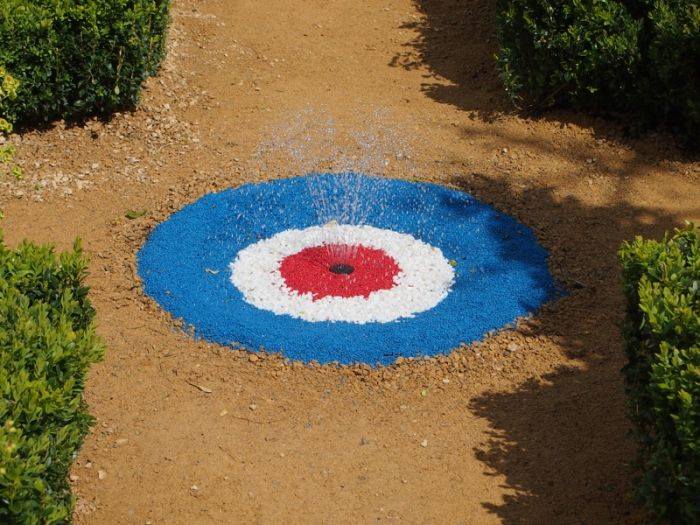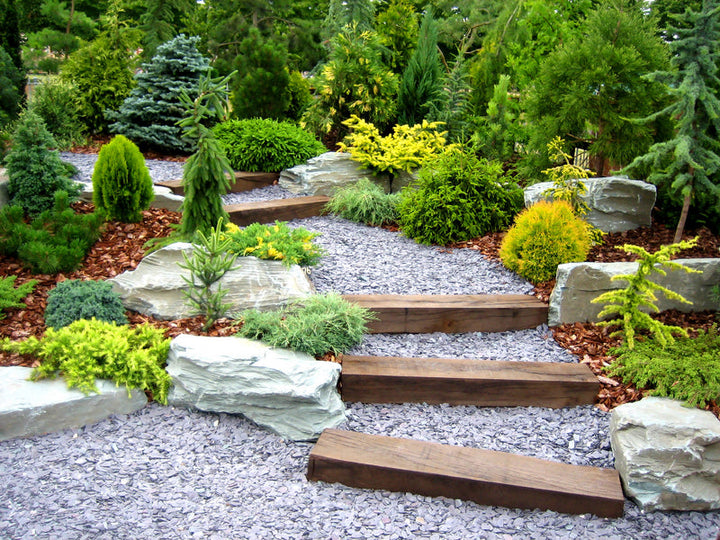How to make a wildlife garden

Nowadays it’s quite common for gardens to prioritise neat appearances over natural habitats. After all, gardens that make use of concrete, wooden decking and artificial grass are certainly a tempting idea when you think about how low-maintenance they can be. However, the truth is, these types of gardens can contribute to declining wildlife populations and fragmented ecosystems. That's why here at Decorative Aggregates, we offer a wide range of products specifically designed to help you create beautiful, wildlife-friendly spaces that can support local biodiversity.
So, whether you're working with a sprawling country garden or a modest urban plot, we can help to transform your garden into a haven for wildlife that is both rewarding and surprisingly straightforward to put together. In this guide, we take a look at everything you need to know about creating a wildlife garden - from understanding the basic principles to selecting the right decorative aggregates that will enhance both the beauty and functionality of your wildlife sanctuary.
What is a wildlife garden?
A wildlife garden is exactly what it sounds like - an outdoor space specifically designed to attract, support and nurture local fauna and flora. Unlike more modern gardens that often prioritise low maintenance appearances and controlled planting schemes, the point of wildlife gardens is to embrace a more relaxed approach that mimics natural habitats and ecological systems.
The core philosophy behind wildlife gardening is to create a balanced ecosystem where plants, insects, birds, and small mammals can coexist and thrive. This doesn't mean allowing your garden to become completely overgrown or untended - it's about making thoughtful choices that benefit wildlife while still creating a space that's beautiful and enjoyable for you.
A successful wildlife garden typically features diverse planting, varied habitats, natural food sources, and water features. By incorporating these features, you're essentially creating a miniature nature reserve - a sanctuary where wildlife can find food, shelter, and breeding grounds in an increasingly urbanised world.
How to attract wildlife to your garden
Attracting wildlife to your garden starts with understanding what local wildlife needs to flourish. The most wildlife-friendly gardens address three fundamental requirements:
-
Food
-
Water
-
Shelter
For food sources, it can be a good idea to incorporate a diverse range of plants that flower and fruit at different times throughout the year. Plants like lavender, buddleia, and foxgloves are good choices as pollinators, while berry-producing shrubs can provide vital sustenance for birds during colder months. It can also be a good idea to allow some areas to grow slightly wild, as seed heads and dying plants provide natural food sources when other options are scarce.
Creating varied habitats is equally important. Different species need different environments to thrive. For example, while bees might thrive among flowering perennials, hedgehogs need dense underbrush and fallen leaves for hibernation. It’s also worth incorporating both sunny and shaded areas, as well as different heights of vegetation to accommodate diverse wildlife preferences. This could include the inclusion of a rockery that creates shady areas in exposed gardens and water features, like a small pond, that can create the perfect habitat for local waterlife.
Finally, you will need to adopt wildlife-friendly gardening practices. For example, you should try to reduce or totally remove chemical pesticides and fertilisers, which can harm beneficial insects and disrupt the delicate balance of your garden ecosystem. Instead, you should try to embrace natural pest control methods like companion planting and encouraging predatory insects that keep garden pests in check naturally.
How to create habitats for wildlife in your garden
Creating diverse habitats is the most important aspect of wildlife gardening. By offering different microenvironments within your garden, you'll attract a wider range of species and help them thrive throughout the year. Below we take a look at three of the easiest habitats you can look to create in your garden.
Build rockeries and log piles
Rockeries and log piles are among the simplest yet most effective wildlife habitats you can create in your garden. A well-designed rockery using varying sizes of stone and decorative aggregates creates numerous nooks and crannies that provide shelter for insects, small reptiles, and amphibians. The spaces between rocks offer perfect hibernation spots, while the rocks themselves absorb heat during the day and release it slowly at night, creating warm microclimates that many creatures appreciate.
For maximum wildlife benefit, incorporate soil pockets between rocks and plant them with drought-tolerant native species. Alpine plants, sedums, and small herbs like thyme are perfect choices that will attract pollinators while adding visual interest.
Log piles also represent a really simple way of creating wildlife-attracting habitat in your garden. Simply stack logs, branches, and woody prunings in a quiet corner of your garden. As the wood gradually decays, it becomes home to countless decomposer organisms, from fungi to woodlice, which in turn attract larger predators like hedgehogs and birds. Even a single large log can become a thriving ecosystem in miniature.
Make use of water features
Water is perhaps the single most effective addition to any wildlife garden. Even a small container pond can really start to increase biodiversity, providing drinking, bathing, and breeding opportunities for numerous species. Surrounding your water features with natural mulch can help retain soil moisture, reduce evaporation in hot weather, and provide shaded, cool areas that benefit small mammals, amphibians, and insects - especially during the height of summer.
For maximum wildlife value, create a pond with varying depths and gently sloping sides to allow easy access and exit for creatures. Incorporate some native aquatic plants, both submerged and emergent, to oxygenate the water and provide cover for pond life. Decorative aggregates such as pebbles, cobbles, or gravel can be used to line the pond margins - not only to create an attractive, natural look, but also to provide essential escape routes for small animals that may fall in. These materials help wildlife like frogs, newts, or hedgehogs climb out safely, reducing the risk of entrapment. Even if space is limited, a simple bird bath or shallow dish kept topped up with fresh water will be immensely valuable to garden birds and insects.
Water features don't need to be elaborate - even a buried bucket with aquatic plants can attract damselflies and provide drinking opportunities for birds and mammals. Surrounding these features with mulch or aggregates can help retain moisture in the soil and support moisture-loving plants while offering habitats for insects and amphibians. The key is to ensure that any water feature includes safe entry and exit points to prevent creatures becoming trapped.
Provide food and water stations
While natural food sources should form the backbone of your wildlife garden, supplementary feeding stations can attract even more wildlife to your garden, especially during harsh weather or the 'hungry gap' in late winter and early spring.
Think about bird feeders offering different foods - sunflower hearts, niger seeds, fat balls. These will attract a range of different species. Simply position these where birds can easily spot predators and escape if needed.
Insect and bee 'hotels' can also provide ideal nesting sites for solitary bees and beneficial insects. These can be purchased or easily made from bundled hollow stems, drilled wood blocks, and pine cones arranged in a simple frame.
How to use decorative aggregates in a wildlife garden
Decorative aggregates don't just look great - they can play a crucial role in wildlife gardening. The right stones, gravels, and chippings can create valuable microhabitats while adding structure and visual interest to your garden.
Gravelled pathways and areas allow rainwater to percolate naturally into the soil rather than running off, supporting healthy soil ecosystems. They can also act as a solid habitat for ground-dwelling insects and create warm, dry spaces that reptiles and amphibians can use for thermoregulation.
If you are thinking of introducing aggregates to your wildlife garden, think about using different types to create varied habitats. Larger stones and boulders form perfect basking spots for butterflies and other insects, while fine gravel can be used by some ground-nesting bees. A mix of different-sized aggregates in a dry garden or rockery can also create numerous microhabitats that benefit different species.
Decorative gravel and slate chippings can also be used to frame your different garden features - surrounding a pond with beach pebbles, for instance, creates an attractive transition zone that also helps amphibians move safely between water and land.
How can Decorative Aggregates help create your wildlife garden?
At Decorative Aggregates, we offer a range of products needed to build a thriving wildlife garden. Our rockery stones create perfect habitats, while our pebbles and cobbles provide ideal pond edging and permeable pathways.
In addition to our decorative aggregates, we also offer a carefully curated selection of horticultural products that can support your wildlife gardening efforts. From peat-free soil and organic green compost to a variety of natural mulches, these products are ideal for improving soil health, retaining moisture, and encouraging plant growth - all of which are essential for supporting a biodiverse garden ecosystem. You can explore these options on our Horticultural Products page.
Browse our website or get in touch with our expert team today to discover how our products can help transform your garden into a thriving wildlife haven.


